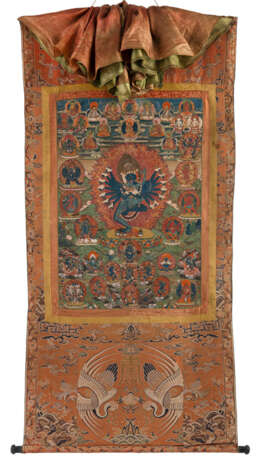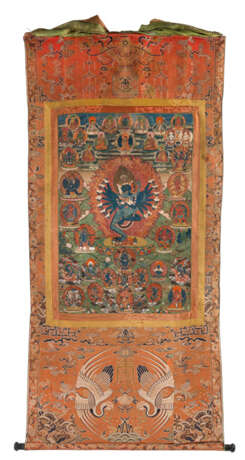ID 875237
Lot 40 | Die tantrischen Gottheiten Hevajra und Nairatmya in liebender Vereinigung
Estimate value
€ 4 000 – 6 000
Tibet, 18. Jh.
67 x 45 (145 x 70,5) cm
| Address of auction |
Nagel Auktionen GmbH Neckarstrasse 189 - 191 70190 Stuttgart Germany | ||||||||||||||
|---|---|---|---|---|---|---|---|---|---|---|---|---|---|---|---|
| Preview |
| ||||||||||||||
| Phone | +49 (0)711 649 690 | ||||||||||||||
| Fax | +49 (0)711 649 69696 | ||||||||||||||
| Buyer Premium | 29,5% | ||||||||||||||
| Conditions of purchase | Conditions of purchase | ||||||||||||||
| Business hours | Business hours
|










